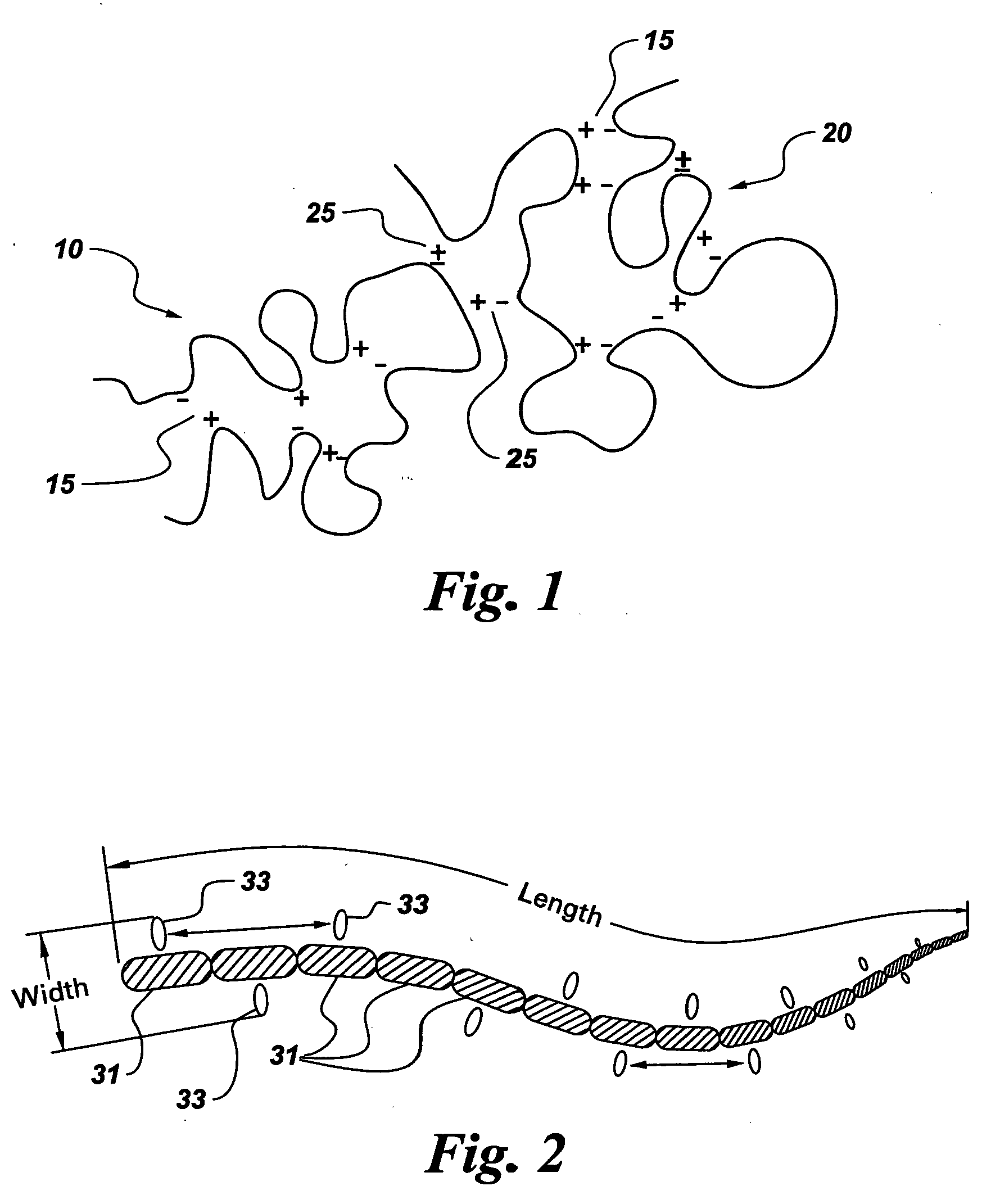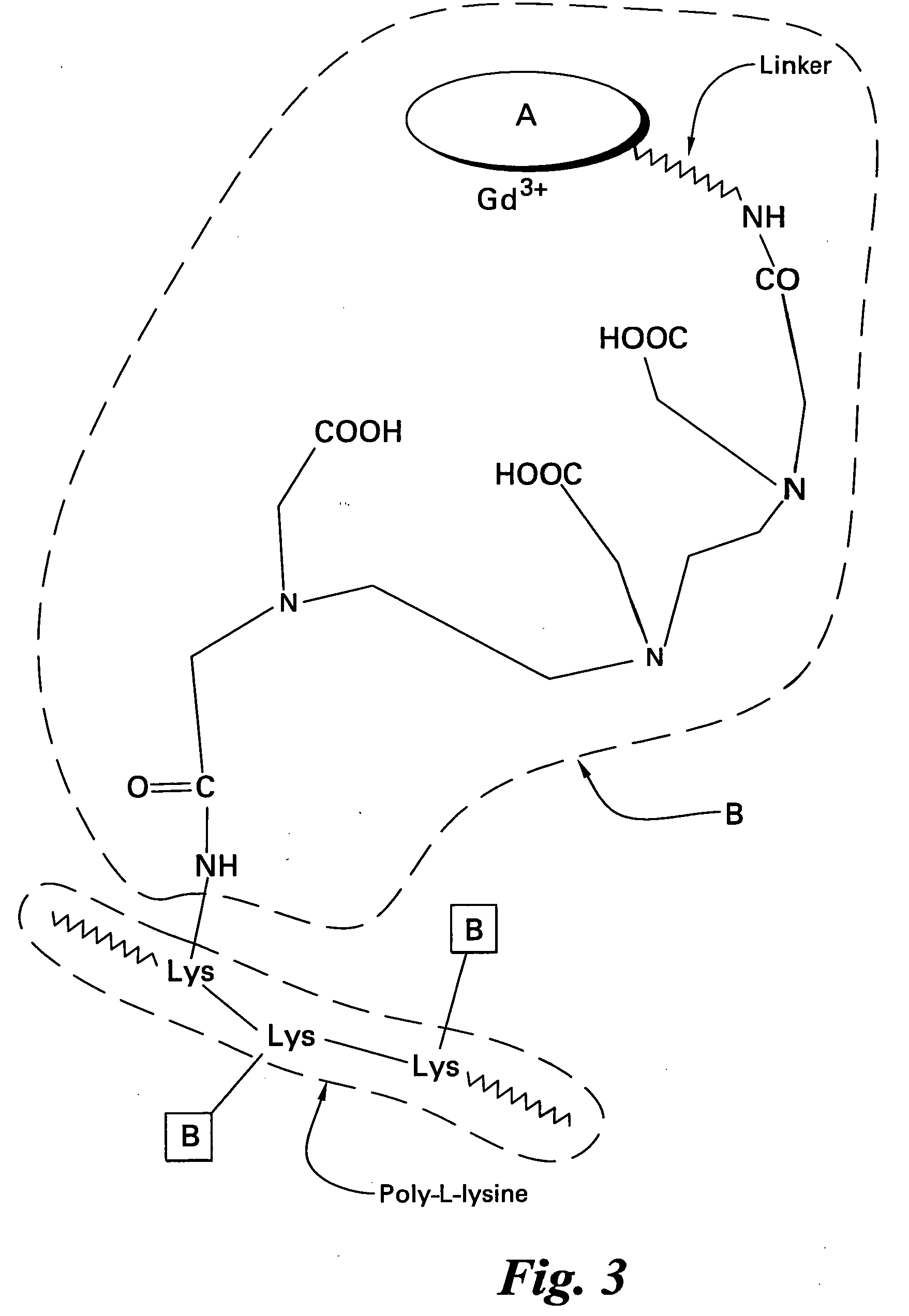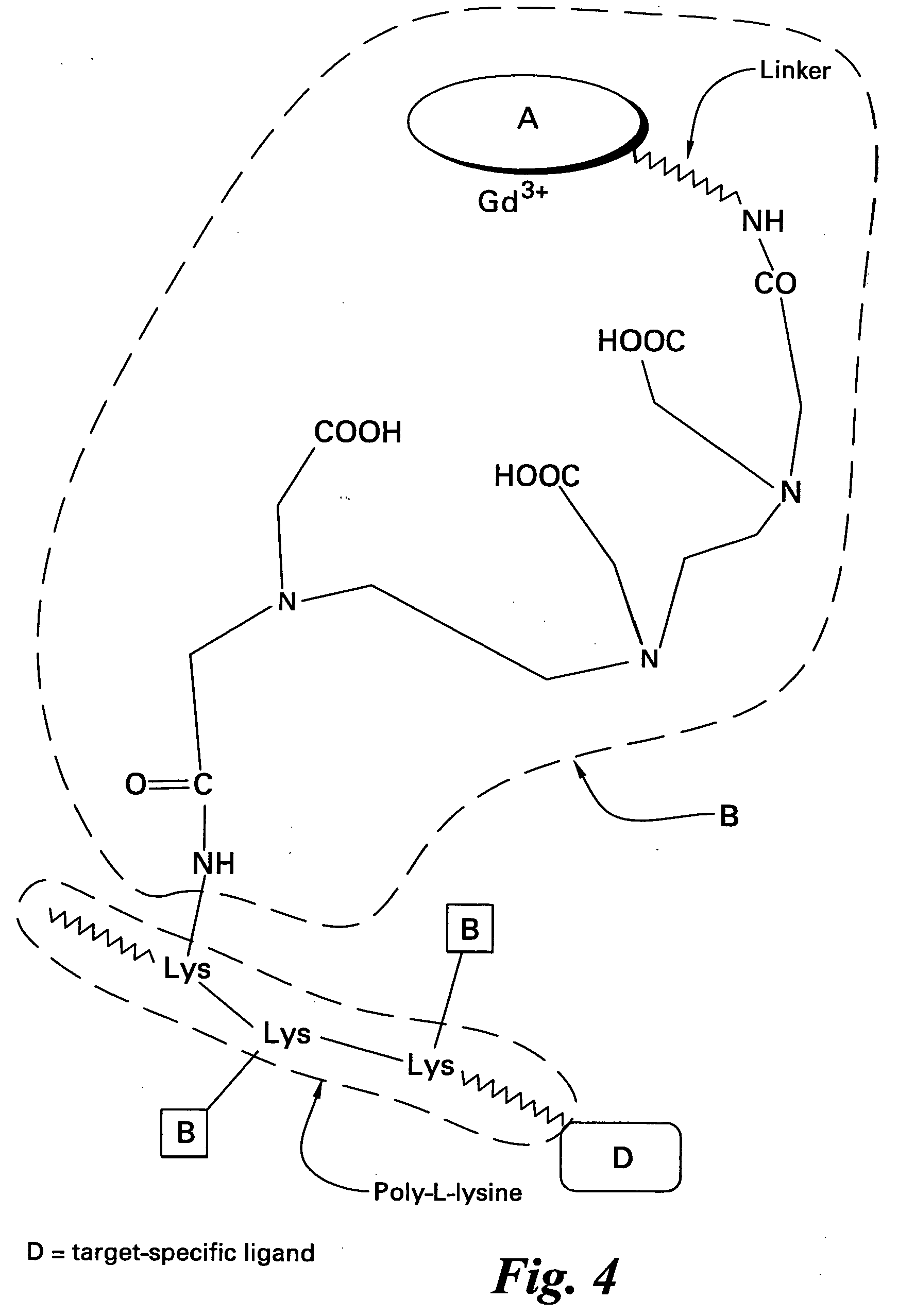Target-specific activatable polymeric imaging agents
- Summary
- Abstract
- Description
- Claims
- Application Information
AI Technical Summary
Benefits of technology
Problems solved by technology
Method used
Image
Examples
example 1
Preparation of Gd-DTPA-PLL Contrast Agent
[0040] Under an inert atmosphere, the penta anion of DTPA was prepared by reaction of DTPA (2.97 g, 7.56 mmol) with triethylamine (5.37 ml, 3.9 g, 38.56 mmol) in 35 ml acetonitrile for 50 minutes at 55° C. Isobutylchloroformate (1.10 ml, 1.16 g, 8.47 mmol) was added dropwise to the DTPA penta anion, cooled in an well-equilibrated −45° C. bath, maintained by a Cryotrol temperature controller (Thermo NESLAB, Portsmouth, N.H.). After stirring at this temperature for 1 hour, the resulting thick slurry of the diethylenetriamine tetraaceticacid-isobutyl dianhydride was added dropwise, under ambient atmospheric conditions, to 15 ml of an aqueous 0.1 M NaHCO3 buffered pH 9 solution of PLL (degree of polymerization (DP)=402, MW=84,000 gmol−1, Mw / Mn=1.10, 0.25 g, 1.2 mmol lysine residue) at 0° C. (Mw is the weight-average molecular weight, and Mn is the number-average molecular weight of the polymer.)
[0041] After 16 hours of stirring at ambient tempe...
example 2
Preparation of DTPA-Conjugated Poly(Glutamic Acid)
[0053] A method of preparing a poly(glutamic acid) carrier molecule highly substituted with DTPA, which sterically hinders significant folding of the poly(glutamic acid) backbone chain, resulting in a contrast-enhancing agent having worm-like conformation is described below.
[0054] A mixed anhydride of DTPA was prepared according to the method as described in P. F. Sieving, A. D. Watson, and S. M. Rocklage, Bioconjugate Chem. Vol. 1, pp. 65-71, (1990).
[0055] A flask was charged with 7 ml. acetonitrile and 2.6 g of DTPA. The solution was warmed to 60° C. under a nitrogen atmosphere. Triethylamine was then added via a syringe. The mixture was stirred until homogeneous. The clear solution was then cooled to −30° C. under a nitrogen atmosphere and then 0.5 ml of isobutyl chloroformate was slowly added to result in the anhydride of DTPA.
[0056] The anhydride of DTPA is then reacted overnight with ethylene diamine (in which the diamine i...
PUM
| Property | Measurement | Unit |
|---|---|---|
| Fraction | aaaaa | aaaaa |
| Time | aaaaa | aaaaa |
| Substance count | aaaaa | aaaaa |
Abstract
Description
Claims
Application Information
 Login to View More
Login to View More - R&D
- Intellectual Property
- Life Sciences
- Materials
- Tech Scout
- Unparalleled Data Quality
- Higher Quality Content
- 60% Fewer Hallucinations
Browse by: Latest US Patents, China's latest patents, Technical Efficacy Thesaurus, Application Domain, Technology Topic, Popular Technical Reports.
© 2025 PatSnap. All rights reserved.Legal|Privacy policy|Modern Slavery Act Transparency Statement|Sitemap|About US| Contact US: help@patsnap.com



